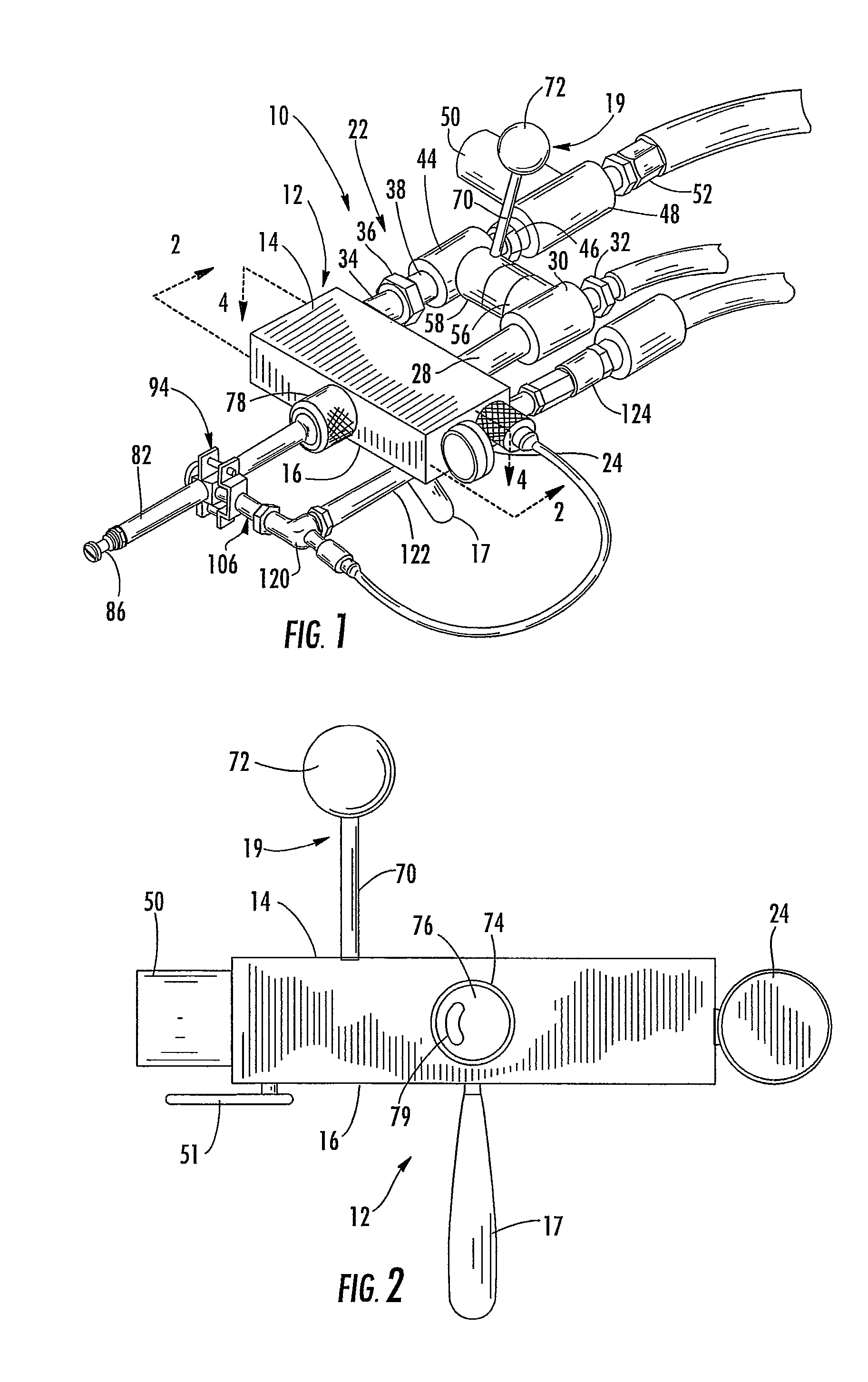Method of using a spray gun and material produced thereby
a technology of spray gun and material, which is applied in the direction of induction-charge spraying, transportation and packaging, lighting and heating apparatus, etc., can solve the problems of expensive and time-consuming downtime, ineffective standard check valves, and often back-up of catalyzed resin
- Summary
- Abstract
- Description
- Claims
- Application Information
AI Technical Summary
Benefits of technology
Problems solved by technology
Method used
Image
Examples
Embodiment Construction
[0012]A spray gun 10 adapted to mix and expel a first material and a second material, wherein the second material may by introduced to a gas before being mixed with the first material. The spray gun 10 is particularly beneficial when the first material has a very high viscosity and the second material has a very low viscosity, however, any suitable materials may be mixed and sprayed with the present invention. In the embodiments described herein, the first material is a resin and the second material is a catalyst, however any other suitable materials may be used. Catalysts that may be used include methyl ethyl ketone peroxide (MEKP), trimethyl, pentanediol diisobutyrate, hydrogen peroxide, organic peroxides, tert-butyl peroxiybenzoate, n-methyl-n-hydroxyothyl-p-toluidane, cobalt napthenate 9 n9n-dimethylaine, isocyanate. Resins that may be used include latex, vinyl esters, epoxies, polyesters, polyamines, urethane, and mdi tdi. In the embodiment described herein, the preferred gas i...
PUM
| Property | Measurement | Unit |
|---|---|---|
| pressures | aaaaa | aaaaa |
| pressure | aaaaa | aaaaa |
| pressure | aaaaa | aaaaa |
Abstract
Description
Claims
Application Information
 Login to View More
Login to View More - R&D
- Intellectual Property
- Life Sciences
- Materials
- Tech Scout
- Unparalleled Data Quality
- Higher Quality Content
- 60% Fewer Hallucinations
Browse by: Latest US Patents, China's latest patents, Technical Efficacy Thesaurus, Application Domain, Technology Topic, Popular Technical Reports.
© 2025 PatSnap. All rights reserved.Legal|Privacy policy|Modern Slavery Act Transparency Statement|Sitemap|About US| Contact US: help@patsnap.com



